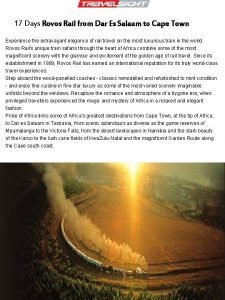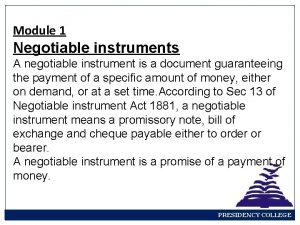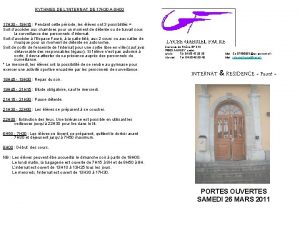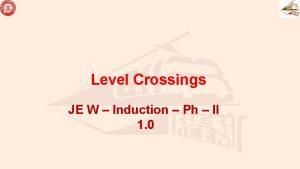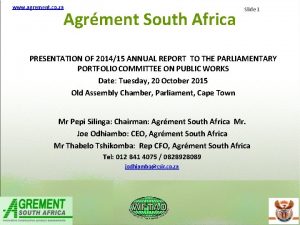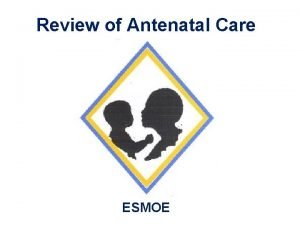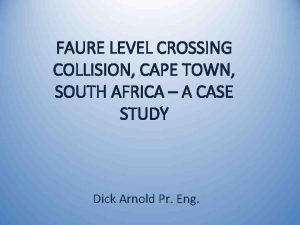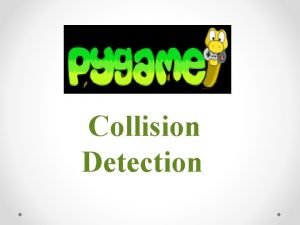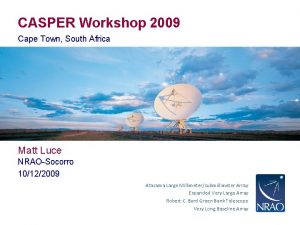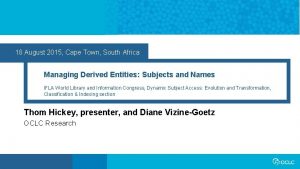FAURE LEVEL CROSSING COLLISION CAPE TOWN SOUTH AFRICA







































- Slides: 39

FAURE LEVEL CROSSING COLLISION, CAPE TOWN, SOUTH AFRICA – A CASE STUDY Dick Arnold Pr. Eng.

STRUCTURE OF PRESENTATION 1. 2. 3. 4. 5. 6. 7. Background Fact Sheet (Rail) Fact Sheet (Road) RSR Investigation Cape High Court Supreme Court of Appeal Conclusion

BACKGROUND • At around 7: 00 on 13 November 2006, a scheduled commuter train departed from Faure station near Stellenbosch en route to Cape Town. • The train driver accelerated to the section speed of 90 km/h and then coasted. As the train entered the long right-hand curve at the village of Croydon, the driver saw the level crossing about 500 m ahead. It was clear.

BACKGROUND Continued • At the 400 m whistle board she sounded the siren as prescribed. She saw a truck moving onto the level crossing. The truck jerked and came to a stop on the centre of the crossing. • The Train driver became concerned and she sounded the siren again. The truck remained stationery in the path of the train. She sounded the siren again and then saw people trying to jump off the back of the truck.

BACKGROUND Continued • Panic ensued as she realised that a collision was imminent. She let go of the controls and ran into the corridor. • The DMF brakes engaged but the train collided with the truck, pushing it 500 metres until it came to a stop.

BACKGROUND Continued

FACT SHEET (RAIL) • The Eerste River – Firgrove section is a single bi-directional track cape gauge (1065 mm) • The section speed limit is 90 km/h. • Whistle boards are situated 400 m and 125 m from the crossing • Train was an 11 -coach 5 M 2 A type with vacuum brakes

FACT SHEET (RAIL) continued • Gradient of track in direction train travel slight downgrade (1 in 500) • Train driver’s sight distance to level crossing is >500 m • Train driver’s sight distance to approach road to crossing is nil • Most recent accident at crossing was in 2002

FACT SHEET (RAIL) continued

FACT SHEET (ROAD) • Rural road provides access to farms and local houses • Road width 4 m tarmac surface • Speed limit on road 60 km/h • Protection level 3 A – advance warning at 120 m, stop sign 5, 2 m from crossing • No booms or flashing lights

FACT SHEET (ROAD) Continued • Alignment of road not perpendicular to track – slight kink in road • Gradient approximately 1: 10 up, close to track • Sight distance from stop line to train > 500 m • Sight distance from approach road to train nil • Type of vehicle – Mitsubishi Canter

FACT SHEET (ROAD) Continued

FACT SHEET (ROAD) Continued

RSR INVESTIGATION • Road and rail signage complied with the applicable prescripts • The train driver did sound the train’s siren as prescribed • From the stop line the truck driver’s view of oncoming trains is good • Responsibility for averting a collision lies with road user alone

RSR INVESTIGATION Continued • No special requirements for train driver when approaching crossing except siren • Train exceeded allowable speed by approximately 6 km/h (96 km/h) • Train driver disobeyed standard operating procedures (did not apply emergency brake) • Energy of impact would have been reduced by 40% if driver had applied emergency brakes

RSR INVESTIGATION Continued • The existing signage was effective in that the truck driver did stop the vehicle prior to moving onto the crossing • This was the truck driver’s first trip over this crossing • The section speed of 90 km/h is too high for this unprotected crossing

RSR INVESTIGATION Continued • This crossing is considered high risk. Risk at unprotected crossings needs to be reduced • The road vehicle stopped at the crossing, moved forwards and stalled on the track

RSR INVESTIGATION Continued • Primary Cause – Human error on the part of the truck driver • Culpability – The RSR does not seek to apportion blame. Rather it seeks to identify primary and contributory causes so that future occurrences of this type can be prevented.

RSR INVESTIGATION Continued Key Instructions to the Operator: - • Carry out a Risk Assessment and mitigate the Risks • In the interim, impose a 40 km/h speed restriction for trains at the crossing

RSR INVESTIGATION Continued 5 M 2 A TRAIN CONSIST 3 MOTOR COACHES + 9 TRAILERS 700 600 Distance to Stop [m] 500 400 300 200 100 0 0 20 40 60 Speed [kph] 80 100 120

HIGH COURT Western Cape High Court Civil Case • Two of the injured passengers instituted a Civil Claim against Metrorail which was heard in the Western Cape High Court in October 2012 Plaintiff’s pleadings • Vicarious liability for negligence on the part of Metrorail: -

HIGH COURT Continued • Collision was caused as a result of the train driver’s negligence: • Failed to warn truck driver of approaching train • Drove the train at excessive speed • Failed to maintain proper lookout

HIGH COURT Continued • Failed to act with due care • Failed to apply brakes timeously, adequately or at all • Failed to avoid the collision

HIGH COURT Continued Collision was caused by Metrorail: • Failure to install mechanical boom • Failure to ensure that mechanical boom was lowered • Prevailing speed limit was excessive • Failed to act with due care • Failed to avoid the collision

HIGH COURT Continued Case Law • “It is the duty of the traveller to look out and wait for the train” • “If he does not use his senses, and so fails to observe a train approaching, he himself is primarily responsible for any injury he may sustain” • “A train driver is under no duty to travel at such a speed that in the event of the crossing being obstructed, he can stop…”

HIGH COURT Continued • The High Court found that neither the train driver nor Metrorail was negligent in that: • Train driver did give adequate warning by sounding the siren • The truck driver was negligent in crossing without satisfying himself that no train was approaching • The train driver’s conduct in not applying the emergency brakes was not negligent. There was little time to perceive and react

HIGH COURT Continued • The speed at which the train was travelling was not the cause of the accident • The fact that the speed at the crossing was reduced to 40 km/h after the accident does not imply that the original speed of 90 km/h was excessive

HIGH COURT Continued • Metrorail took reasonable steps to guard against foreseeable harm to the public by installing signage in line with applicable prescripts • The failure to install booms is not sufficiently linked to the accident that ensued

HIGH COURT Continued High Court Judgment The High Court’s Judgment was that the Plaintiffs’ claims were dismissed but they were given leave to appeal. The parties were ordered to pay their own costs.

SUPREME COURT OF APPEAL In August 2014 the Supreme Court of Appeal heard the appeal.

APPEAL COURT Continued Appellants’ Grounds for the Appeal • The Appellants endeavored to establish negligence on one or more of the following grounds: • The speed of 90 km/h was inappropriate and excessive for this crossing

APPEAL COURT Continued • Road signage was inadequate to warn motorists • Metrorail failed to erect a boom or barrier • Vicariously, through the train driver’s failure to sound warning and failure to engage emergency brake

APPEAL COURT Continued Case law on Negligence - Kruger v Coetzee 1996 The test for blame rests on two bases, namely reasonable foreseeability and reasonable preventability of damage. • The appeal court found that the foreseeability of harm at a place where rail and vehicular traffic intersect is unquestionable.

SUPREME COURT OF APPEAL Furthermore, the low level of protection and high train speed presented a substantial risk of very serious harm: -. • It was uncontrolled with no booms or barriers • The overhanging foliage and concrete wall obscured the views of train and vehicle drivers • 90 km/h is at the highest end for trains on a railway line

APPEAL COURT Continued • Had Metrorail reduced the speed limit to 40 km/h the collision would not have occurred • The crossing carries a fair amount of vehicular traffic • The RSR considered the crossing to be high risk and directed Metrorail to implement a reduced speed

APPEAL COURT Continued Outcome of Appeal Court Hearing The Supreme Court of Appeal upheld the appeal and awarded damages to the appellants.

CONCLUSION The Appeal Court’s Ruling sets a precedent which is binding in all Provinces of South Africa. In summary, the fact that rail operators have complied with current prescripts relating to level crossings does not make them immune from civil claims against them.

CONCLUSION Continued The risks at level crossings need to be adequately assessed and appropriately mitigated, failing which, in the event of a collision, the rail operator can be held liable for damages incurred and /or injuries suffered.

THE END Thank you for your attention
 Sin values
Sin values Exhibition booth johannesburg
Exhibition booth johannesburg Plumed serpent ley line
Plumed serpent ley line Rovos rail cape town to dar es salaam
Rovos rail cape town to dar es salaam Milkor centurion
Milkor centurion Biov online kepri
Biov online kepri Difference between special crossing and general crossing
Difference between special crossing and general crossing Elim - cape south coast
Elim - cape south coast Fill in the gaps with the right prepositions
Fill in the gaps with the right prepositions Annie faure peintre
Annie faure peintre Annie faure
Annie faure Annie faure peintre
Annie faure peintre Annie faure peintre
Annie faure peintre Annie faure peintre
Annie faure peintre Serge faure
Serge faure Annie faure peintre
Annie faure peintre Carbon cycle drag and drop
Carbon cycle drag and drop Lycée gabriel fauré annecy internat
Lycée gabriel fauré annecy internat Slidetodoc
Slidetodoc Lc gate height gauge
Lc gate height gauge Diversion head work
Diversion head work Agrement south africa
Agrement south africa President team herbalife salary
President team herbalife salary South africa unemployment rate by race
South africa unemployment rate by race Dr hamilton
Dr hamilton Unjustified enrichment south africa
Unjustified enrichment south africa Political map of north africa and southwest asia
Political map of north africa and southwest asia 11 official languages of south africa
11 official languages of south africa Dutch south africa
Dutch south africa How many capital cities in south africa
How many capital cities in south africa Antenatal examination format
Antenatal examination format Oxford university press south africa
Oxford university press south africa Six key ministerial priorities
Six key ministerial priorities Naairs south africa
Naairs south africa Safbc
Safbc Imperialism in africa timeline
Imperialism in africa timeline Zero hunger programme south africa
Zero hunger programme south africa Cultural geography of africa
Cultural geography of africa Neuropsychology in south africa
Neuropsychology in south africa Coastal region south africa
Coastal region south africa



